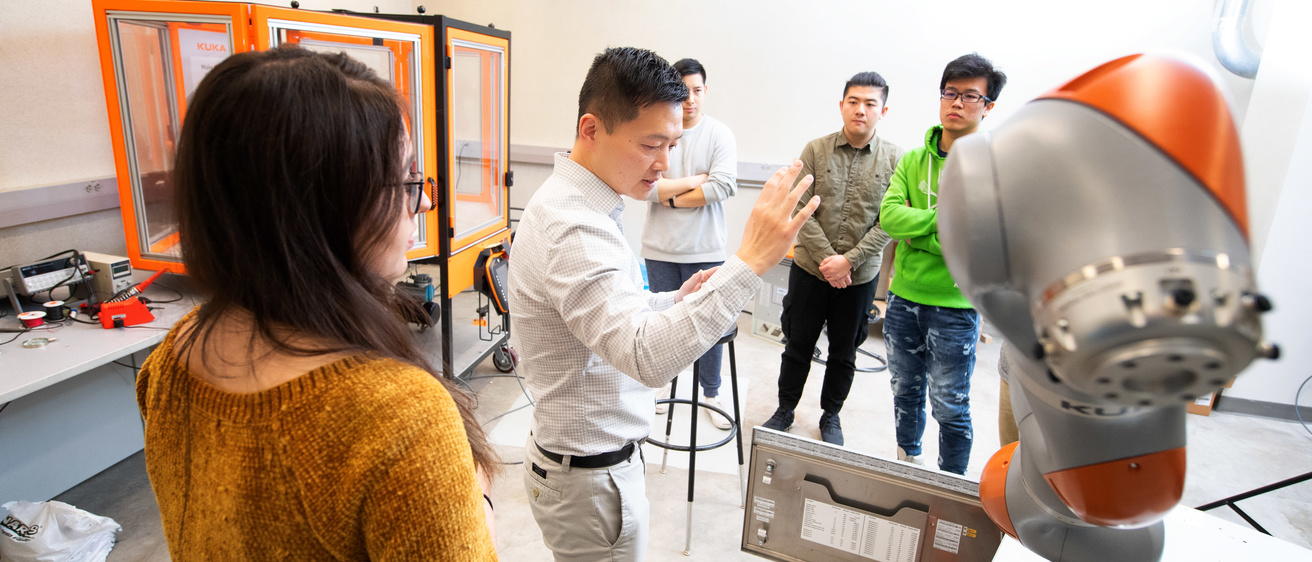Written by: Will Fineman
Shaoping Xiao, a University of Iowa associate professor of mechanical engineering, is developing a new method to study materials that can better withstand the demands of use in high-tech industries, including automotive, aerospace, and biomedical.
Enhanced by machine learning, the new method will examine the materials, including titanium, titanium boride, and ceramics, under different thermal environments from nanoscale to microscale, and then to macroscale.
Titanium and titanium boride have high specific strength, specific stiffness, fatigue resistance, and hardness. These materials are also biocompatible.
“Titanium-based composites can hardly be machined and suffer from low hardness and poor wear resistance,” said Xiao, who is also an Iowa Technology Institute faculty affiliate. “Adding ceramics can overcome these obstacles for automotive and aerospace applications.”
Xiao was awarded a National Science Foundation grant to develop this new computational method for investigating the mechanics of a modified group of materials at multiple scales. Xiao directs the Multiscale Computational Science and Engineering Laboratory. Caterina Lamuta and Phillip Deierling, professors in the UI Department of Mechanical Engineering, will serve as co-principal investigators in this project.
If developed and validated by experimental testing, the proposed process will aid the design of next-generation materials for applications in several high-tech industries, including aerospace, automotive, and biomedical.
The $486,358, 3-year grant provides funding for undergraduate education in data science and engineering as well as finances for recruitment of female, underrepresented minority, and LGBTQ+ students. The award will also allow for more university outreach programs to K-12 students.
Spatially tailored materials are composites consisting of two or more distinct materials in which the component distribution continuously changes in space.
This unique group provides advantages over traditional composites due to its ability to use the predominant characteristics of the base materials and to modify the effective material properties depending on conditions and temperatures.
For example, the concept of spatially tailored material allows structural engineers to change the stiffness and strength properties through the thickness of aircraft wings in order to tailor the structural behavior, Xiao said. The risk that the wings snap off or fail can be reduced.
Unlike spatially tailored materials, a regular composite with a constant volume fraction usually doesn’t have the material properties varying in space.
Current practices for numerical modeling of spatially tailored materials use principles of micromechanics to transition to the macroscale.
Most of these methods cannot model certain interactions taking place at the molecular level and the microstructure uncertainties at the microscale level. Both drawbacks prevent researchers from accurately predicting material responses at the micro and macro scales.
Researchers will work toward the development of a data-enabled approach in hierarchical multiscale modeling to pass information through multiple scales, and they will attempt to establish an efficient way to generate microscale models of composites to take account of microstructure uncertainties.
“The research develops a novel computational method enhanced by artificial neural networks to design composite materials,” Xiao said. “The methodology framework can be applied to study and design other materials."
